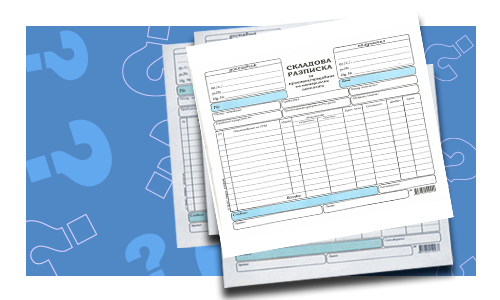- Promotions
Filling out a warehouse receipt – what do we need to know?

Table of Contents
1. Main advantages of using warehouse receipts
2. How to avoid errors when filling them out?
3. Why should every warehouse receipt be as accurate as possible?
A warehouse receipt is not just a piece of paper – it has legal value and is of great importance for the movement of goods. A mistake in filling it out due to negligence can be costly – money, reputation and stress for all participants in the commercial operation.

Main advantages of using warehouse receipts
Correctly filling out warehouse receipts facilitates communication between departments, speeds up logistics processes and minimizes administrative misunderstandings. When everything is accurately documented, the risk of shortages, confusion or losses is drastically reduced.
On the other hand, unorganized documentation creates chaos – especially if there are no clear instructions or a template to work from.
These documents, although at first glance formal, are legally binding. In the event of a dispute, it is the warehouse receipt that often proves to be decisive evidence. It not only shows when and what was received, but also reflects the availability at a given time.
How to avoid errors when filling them out?
Incorrect preparation of warehouse receipts can lead to adverse consequences. The following guidelines will help you avoid them:
- check the availability before filling in the data - this prevents discrepancies between the real and reported goods;
- always use an updated sample template approved by the responsible person - this way you guarantee that all the necessary fields and wording are included;
- make sure that the receipt is clearly readable and without gaps - legibility eliminates the risk of misinterpretations or double entry;
- apply standard instructions for each filling - this way it is easier to train new employees and creates unified procedures;
- avoid manually changing values - especially those related to invoicing. It is very important to maintain the integrity of the document in order to avoid administrative discrepancies;
- record each movement of goods in the warehouse report - the main idea in this case is to achieve consistency and facilitate future references and revisions.
A well-prepared warehouse receipt saves time and nerves, which directly depends on the organized system for its creation - this way, every check becomes easy and transparent.

Why should every warehouse receipt be as accurate as possible?
Documents such as warehouse receipts do not tolerate assumptions and "approximate" data. Every entry in them is important - both for accounting and for commercial reporting. When they are prepared without errors, this speaks of high professionalism and helps build trust with customers and partners.
A well-structured document ensures easy tracking of each operation and eliminates the risk of confusion during an audit.






